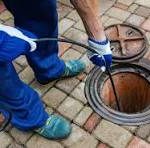Can You Use a Regular Sink Drain for a Mop Sink?
No, you generally cannot use an ordinary sink drain for a mop sink. While it appears to be a short repair, regular sink drains are not designed to cope with the excessive amount of water, debris, and cleansing chemicals that mop sinks commonly use. Building codes and rules also regularly require mop sinks to have unique plumbing setups. A standard sink drain not meeting these standards can cause clogs, harm, or even non-compliance with nearby plumbing standards.
Why You Shouldn’t Use a Regular Sink Drain for a Mop Sink

1. Capacity Issues
Mop sinks are designed to handle large amounts of water and particles from mopping and cleansing sports. A regular sink drain is smaller and may not successfully cope with the increased go-with-the-flow price. This can cause common clogs and backups, decreasing the effectiveness of your cleansing routine.
2. Chemical Resistance
Cleaning chemicals applied to mop sinks are often harsh and corrosive. Regular sink drains, especially those crafted from less durable materials, might not resist repeated exposure to those chemicals. Over time, this could cause leaks and pricey upkeep.
3. Plumbing Code Requirements
Most nearby building codes specify that mop sinks require precise drain styles, which incorporate functions like backflow prevention to avoid contamination of the water supply. Regular sink drains generally lack those features, which means their use must result in code violations.
learn more can plumbing drain go into toilet vent
Proper Setup for a Mop Sink
1. Install the Correct Drain
Mop sinks need a long-lasting drain with sufficient capacity to handle heavy water drift and particles. Look for drains manufactured from corrosion-resistant materials like chrome steel or PVC.
2. Include a Strainer or Trap
Mop sink drains frequently encompass strainers to seize debris and prevent clogs. Regular sink drains rarely have this selection; that is every other reason they may need to be corrected.
3. Ensure Backflow Prevention
Backflow prevention gadgets are critical for mop sink setups. They save contaminated water from flowing lower back into the smooth water delivery, ensuring hygiene and safety.
4. Comply with Local Plumbing Codes
Hiring an authorized plumber in denton tx to put inside the mop sink ensures that the setup complies with nearby plumbing codes. This step is vital for commercial areas that strictly enforce health and safety rules and regulations
Consequences of Using the Wrong Drain
Using a regular sink drain for a mop sink can cause numerous problems, which include:
Frequent Clogs: Regular drains can’t manage mop sink particles, which are predominant to blockages.
Plumbing Damage: Corrosive chemical substances can degrade favored drains, causing leaks.
Code Violations: Non-compliance with plumbing codes can result in fines or the need for high-priced retrofits.
Hygiene Risks: Without proper backflow prevention, water contamination can occur.
Alternatives to Consider
If you’re handling constraints that make putting in the right mop sink drain tough, keep in mind the alternatives:
Portable Mop Sinks: These may be moved as wanted and don’t require complicated plumbing.
Utility Sinks: Larger and more sturdy than ordinary sinks, application sinks may match in some instances; however, nonetheless, they require suitable plumbing changes.
Conclusion
While using a standard sink drain for a mop sink can also appear convenient, there are more feasible solutions in maximum instances. Mop sinks have specific requirements that everyday sink drains certainly can’t meet, from coping with excessive water drift to resisting harsh chemicals and adhering to plumbing codes. To ensure certain functionality, safety, and compliance, putting in a mop sink with the proper drain machine is notable. Always seek advice from a certified plumber to make sure your setup meets nearby guidelines and





Leave a Reply